 EN
EN
 PT
PT

Quick guide for teachers
Lower and upper secondary school
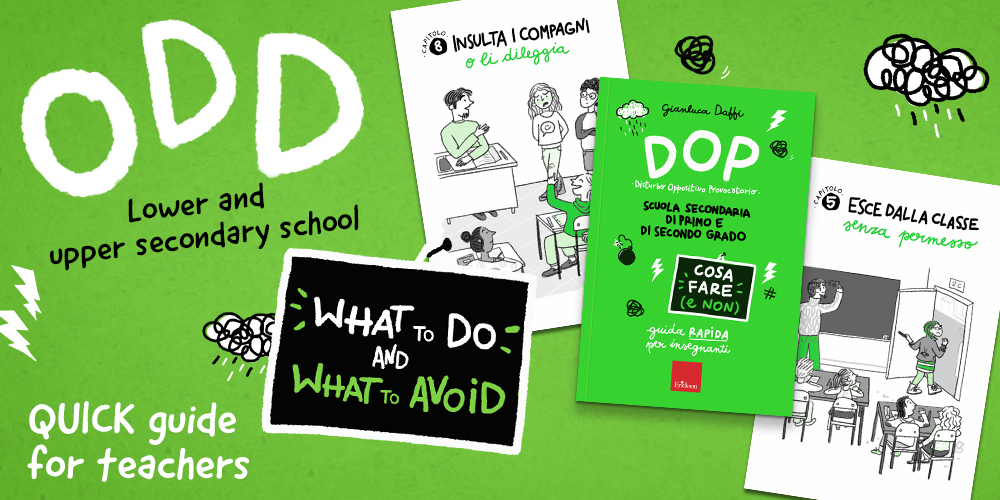
In the style of a Teacher Training notebook, this practical and ready to use volume presents tips, effective strategies and useful indications to successfully deal with 12 typical problem behaviours of Oppositional Defiant Disorder, ODD, and better manage 11 to 17 year old children in the classroom.
BOOK STRUCTURE AND CONTENTS
After an in-depth first theoretical part, ODD Oppositional Defiant Disorder WHAT TO DO (AND WHAT TO AVOID) proposes 12 chapters in which the typical problem behaviours of pupils with ODD in lower and upper secondary school are addressed.
The problem behaviours analyzed are:
What to o and what to avoid
The reason for each behavior is initially explained in a few brief sentences (Why does he/she do this?), followed by simple and clear indications for the teacher on the attitudes to be adopted and avoided (What to do, What NOT to do). A discussion on the topic follows (What to keep in mind) and tools and strategies are provided in How to intervene with regard to some crucial educational and didactic aspects. This is further explored in the paragraphs dedicated to Structuring and collaboration guidelines are then drawn up with parents and other school workers (The educational pact).
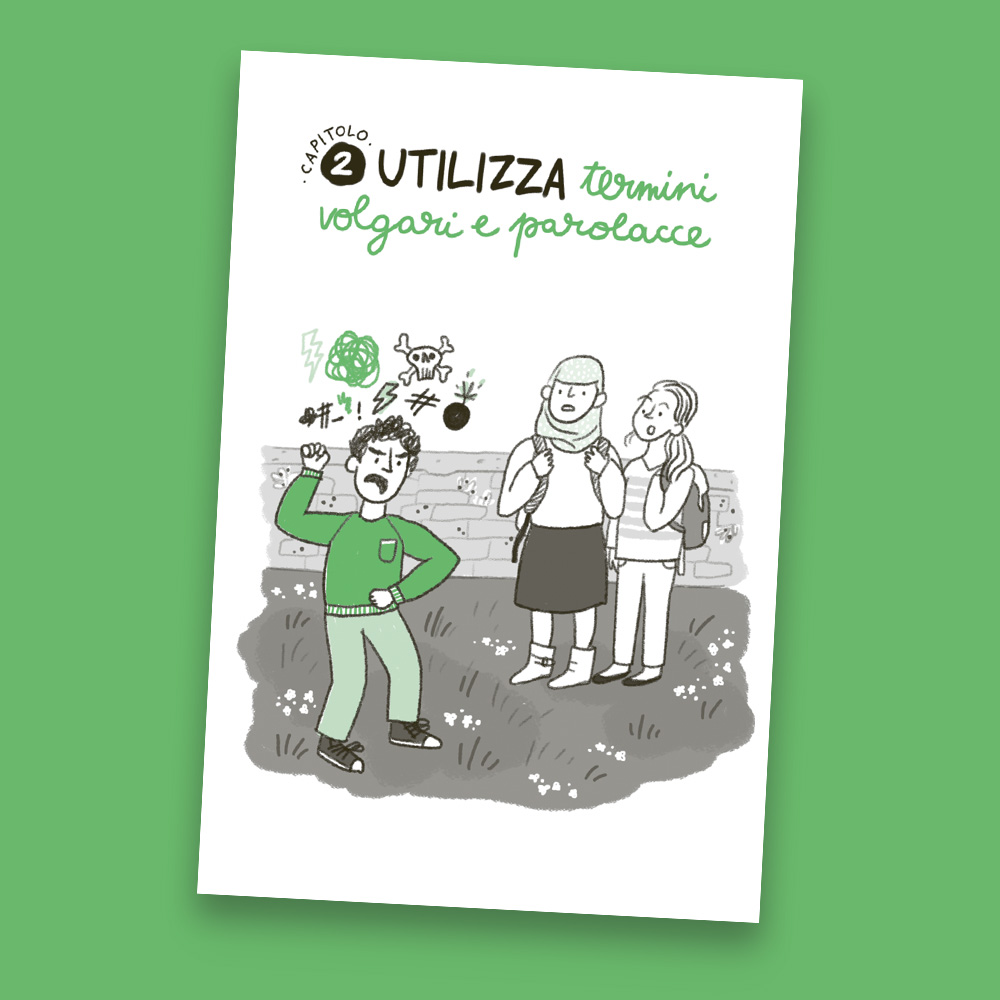
At the beginning of each chapter, a drawing introduces the analysed behaviour.
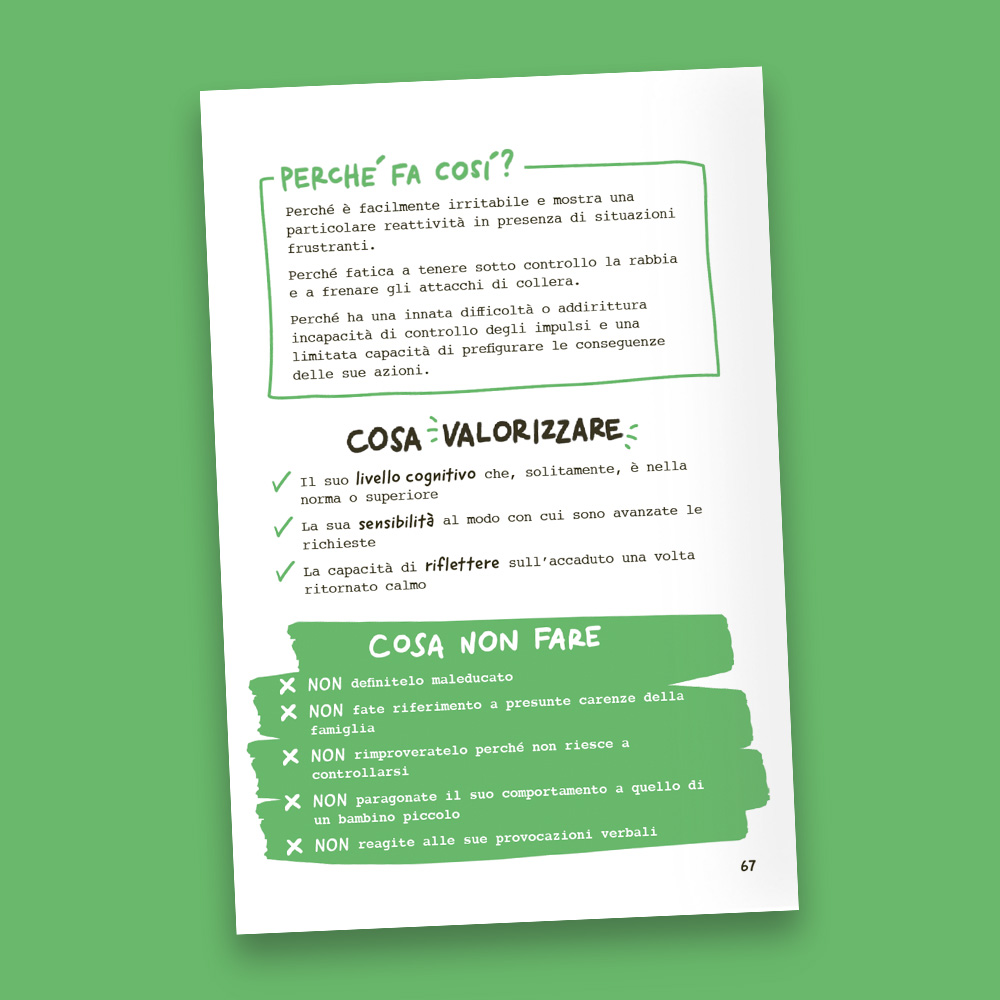
• Explanations of the problem behaviour being considered: Why does he/she do this?
• Brief and simple indications that can be useful to the teacher as a reference point for quickly deciding What to do and reflect on What to avoid.
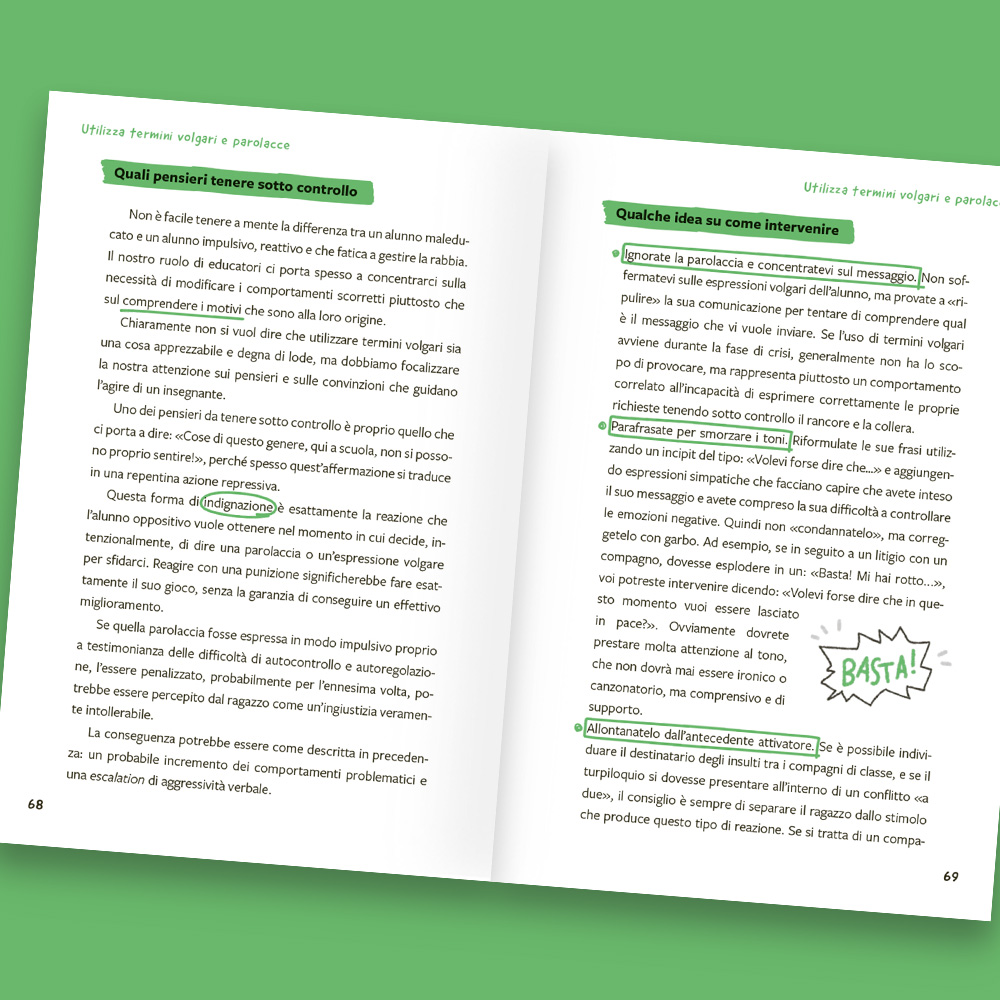
• A more in-depth description of the specific problem behaviourbeing worked on: Analysis of the problem behaviour.
• The tools and educational strategies to create the intervention: How to intervene.
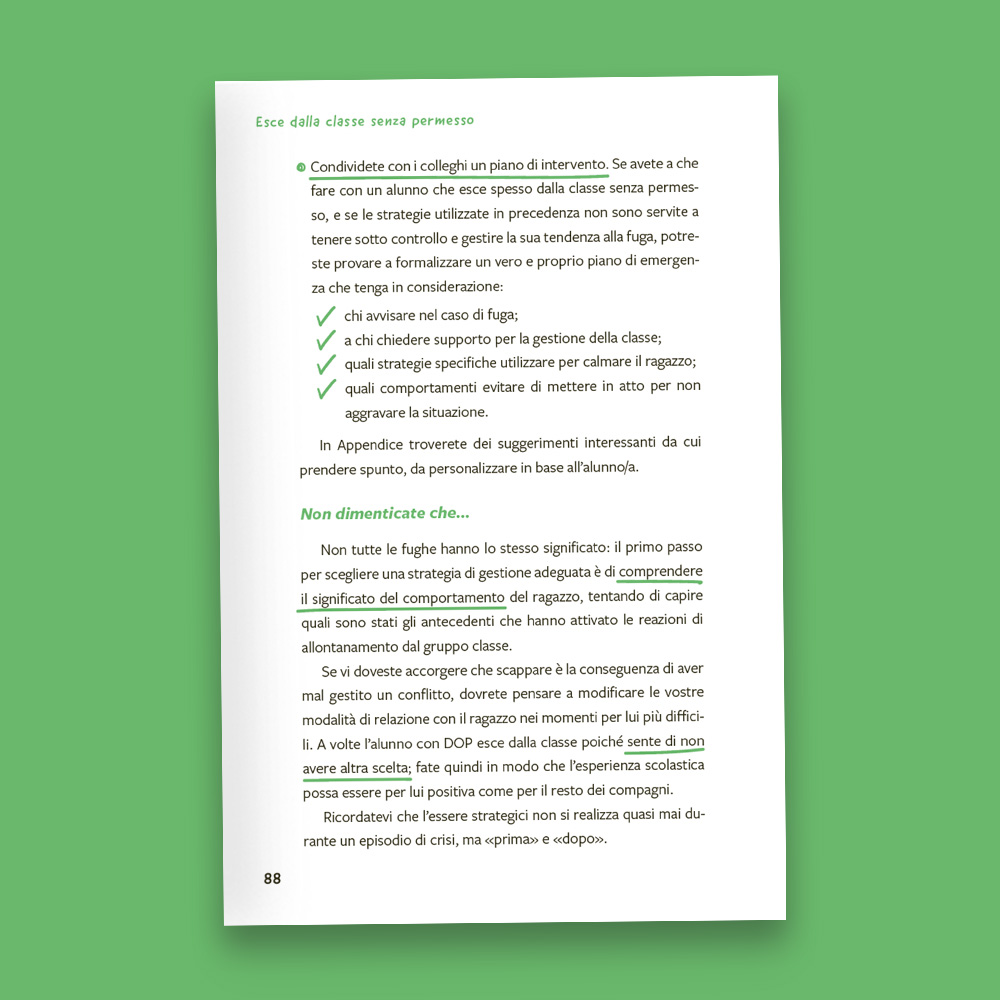
Each chapter closes with The expert advice: reflections to further understand and enrich the teacher’s “briefcase of educational tools”.
Appendix
The Appendix contains some suggestions for drawing up an intervention plan for the management of behavioral crises, to be shared with colleagues within the same institution.
Leaf through the worksheets in the Appendix, which have been translated into English to facilitate your evaluation:
THE AUTHOR
Gianluca Daffi: with a degree in Psychology and specialised in behavioural problems, he collaborates with the Department of Psychology and with the Learning and Educational Psychology Service of the Catholic University of the Sacred Heart in Milan. He has collaborated with IRRE Lombardy in the research group on personalisation and with the MIUR on the project for training and refreshing special needs teachers. A trainer for public authorities and private enterprises, he provides training for parents and teachers.